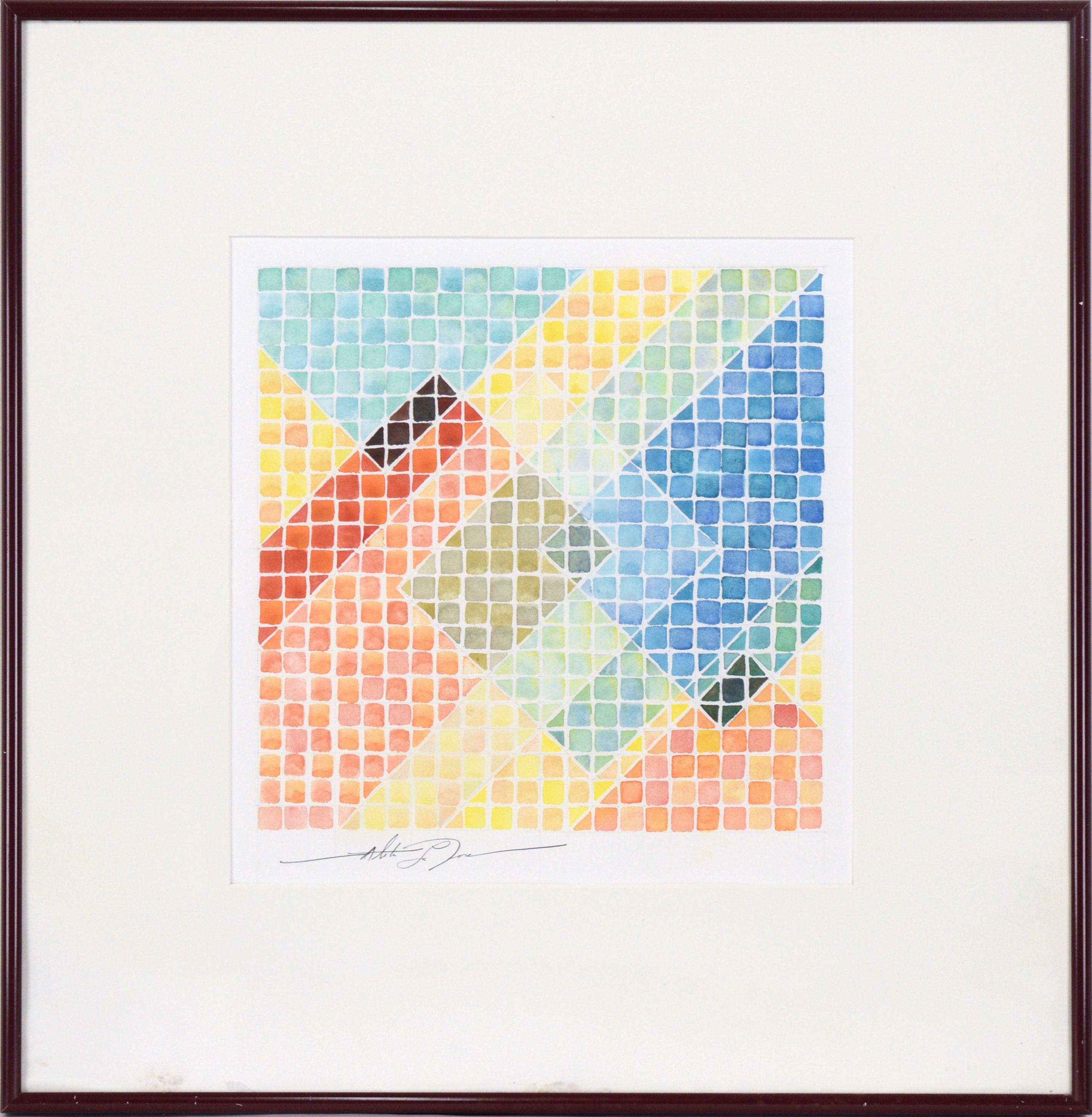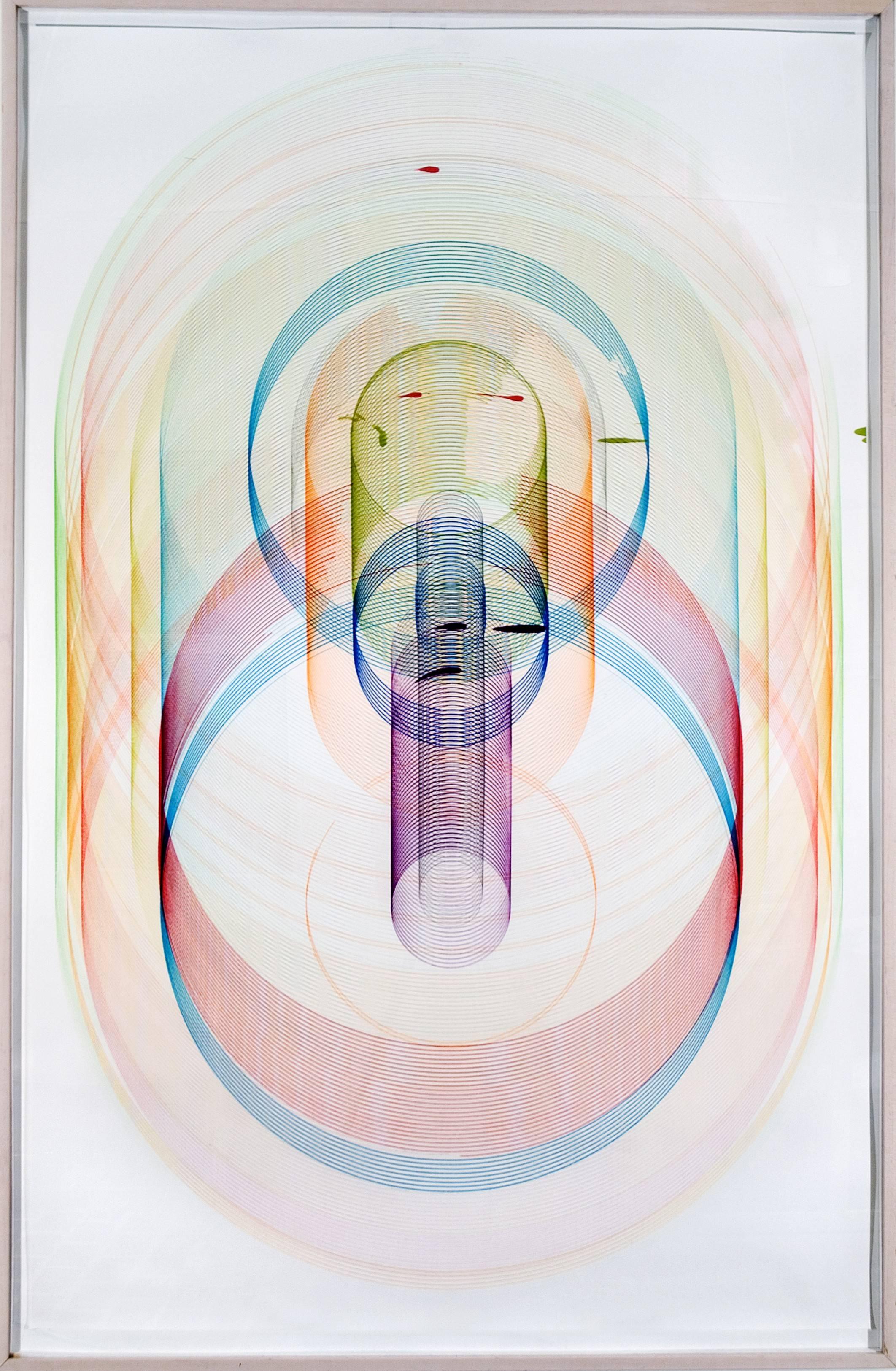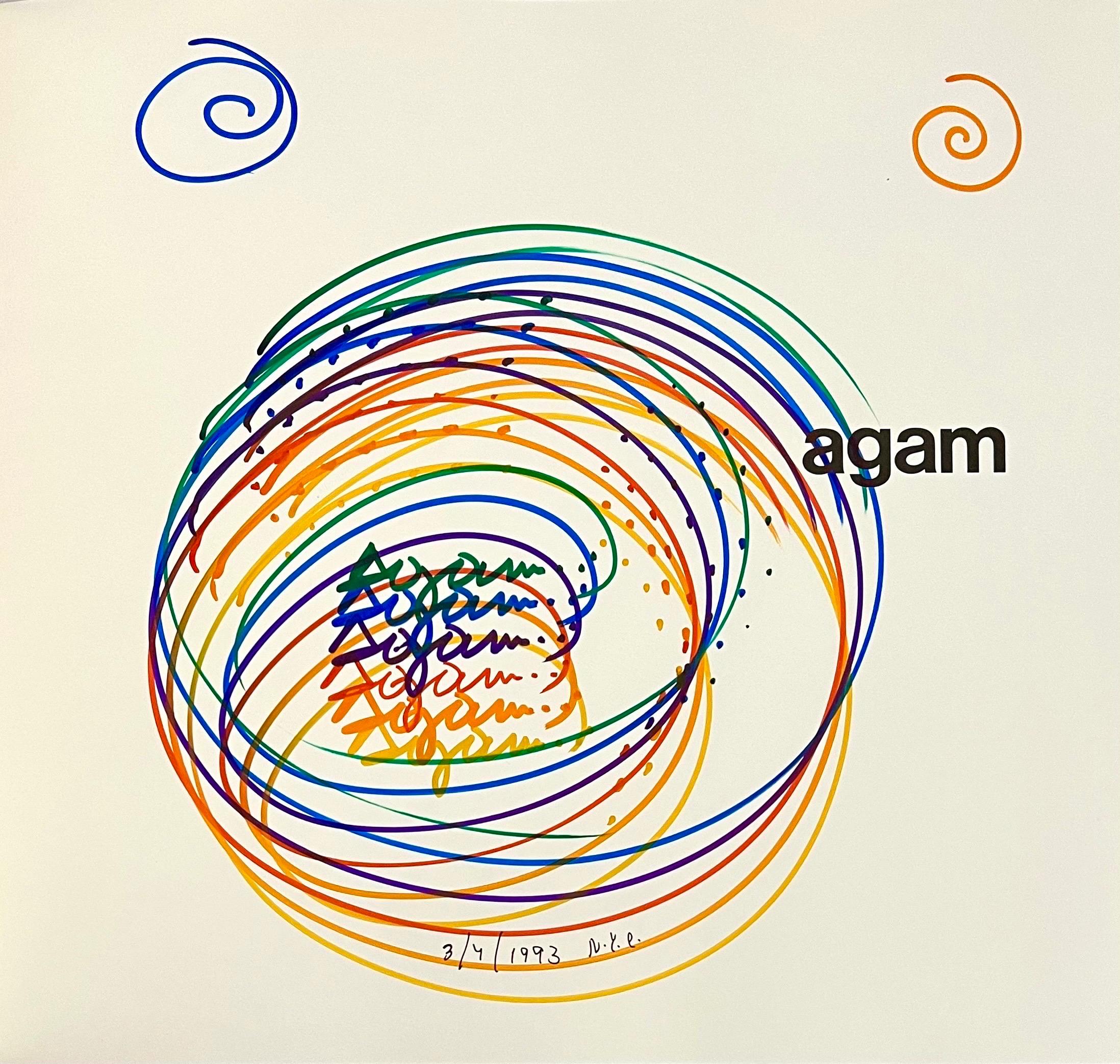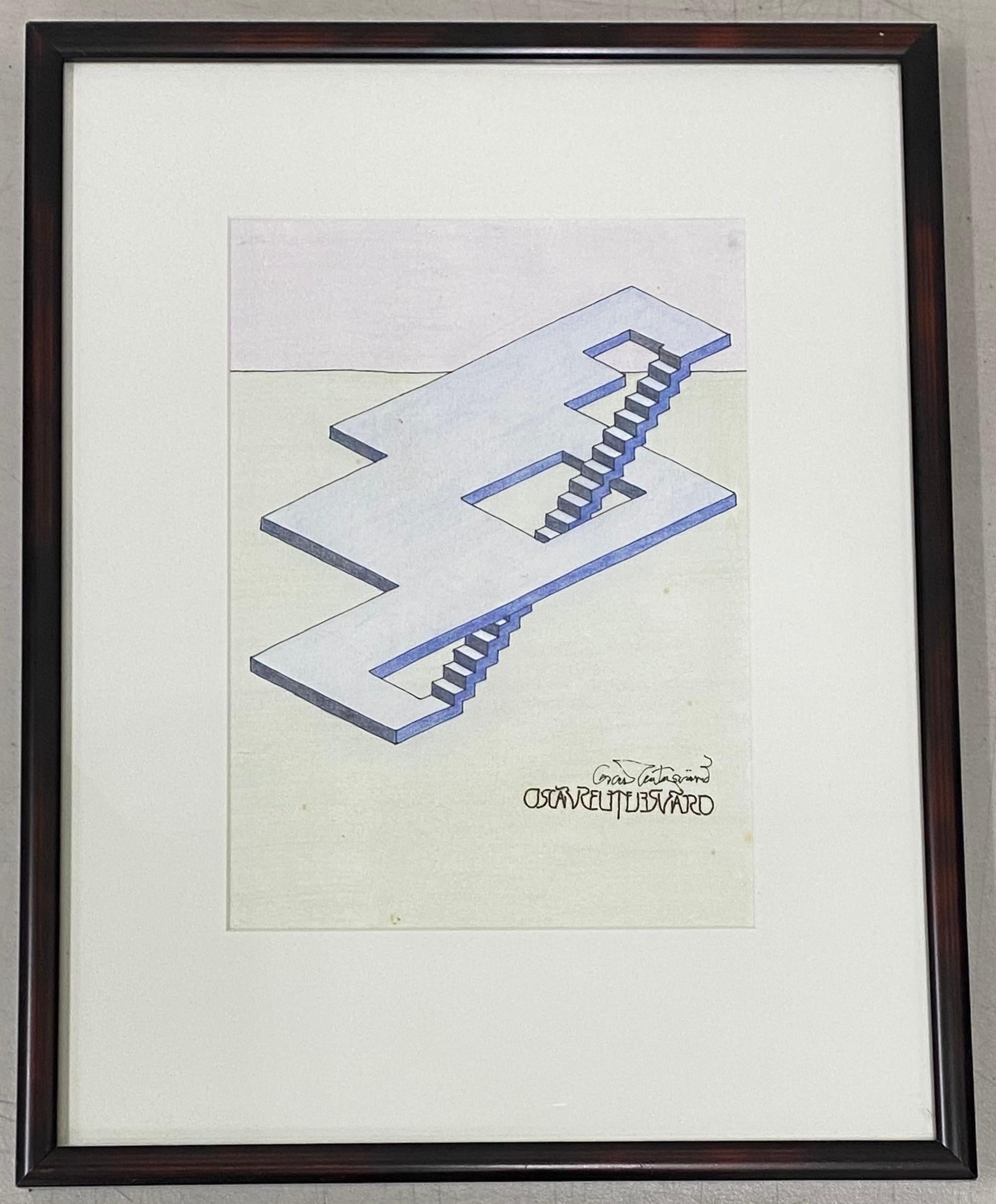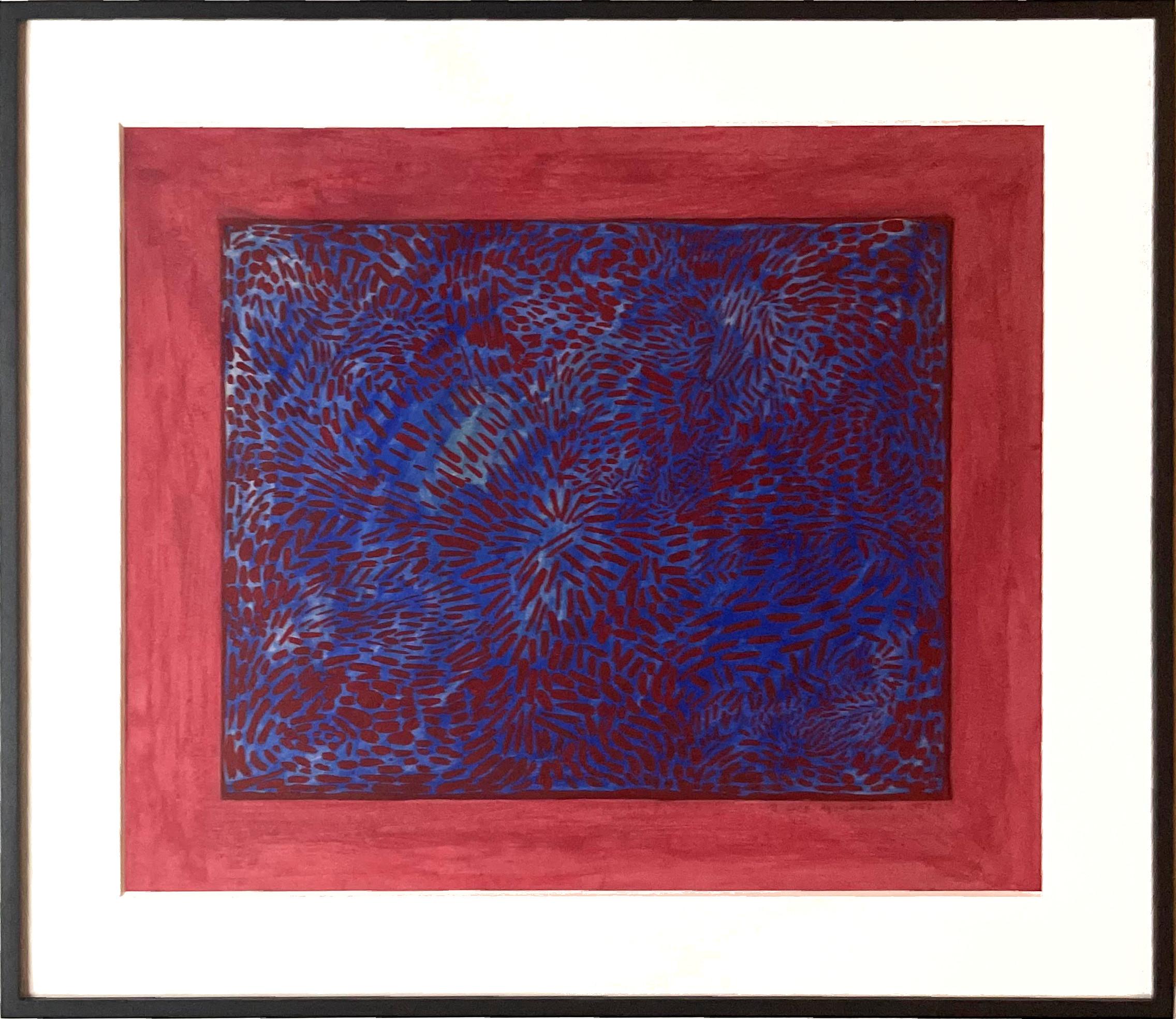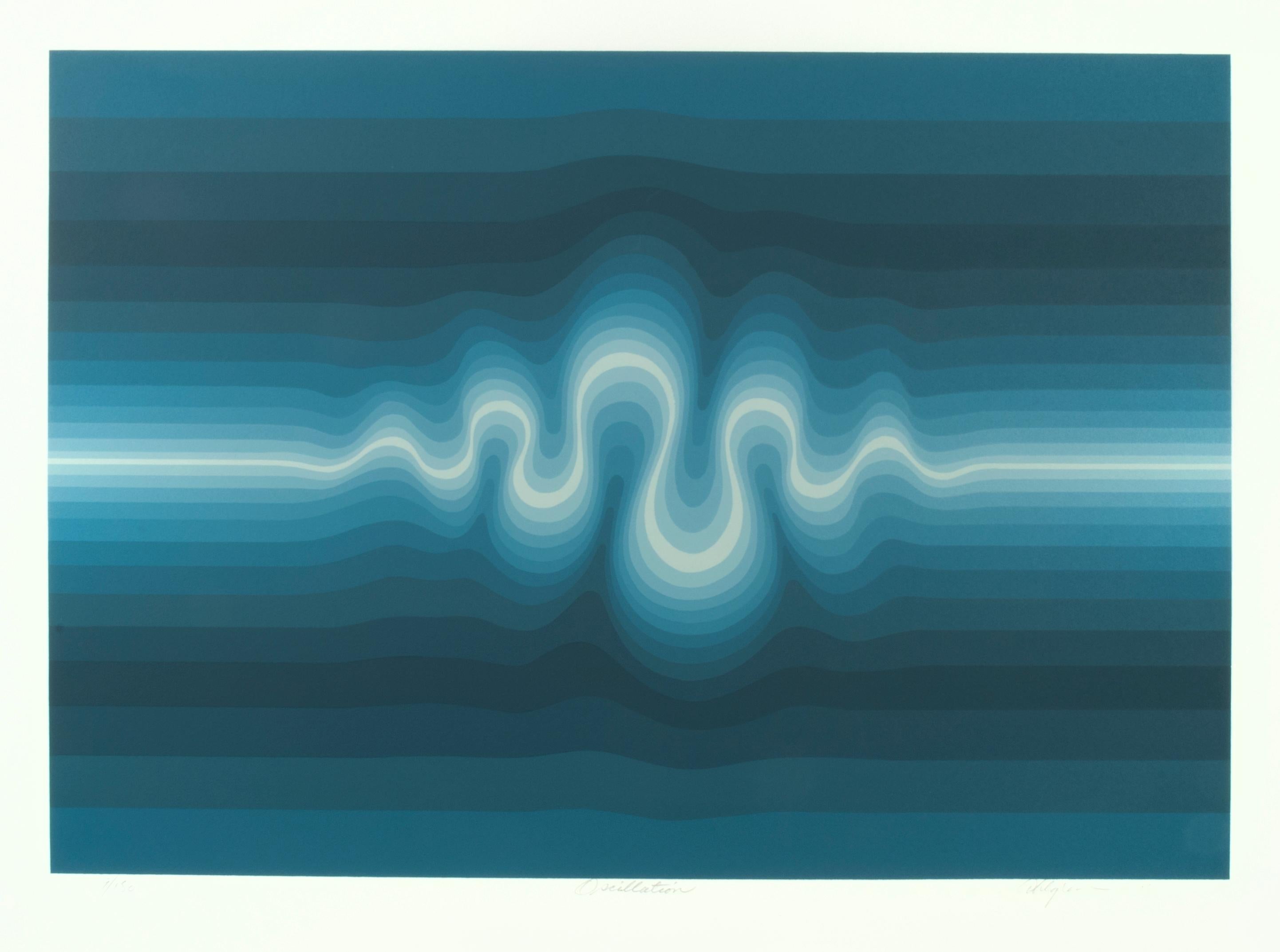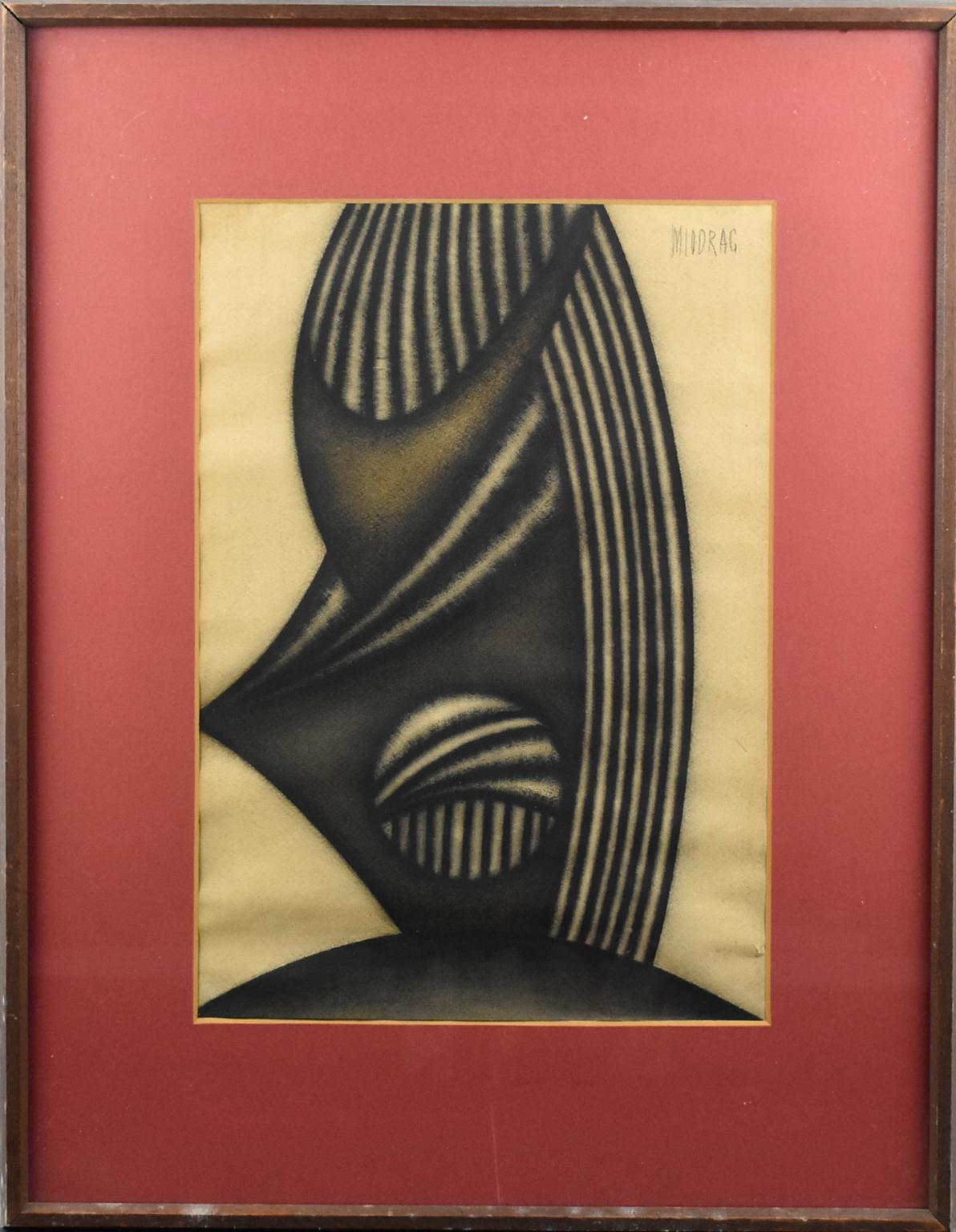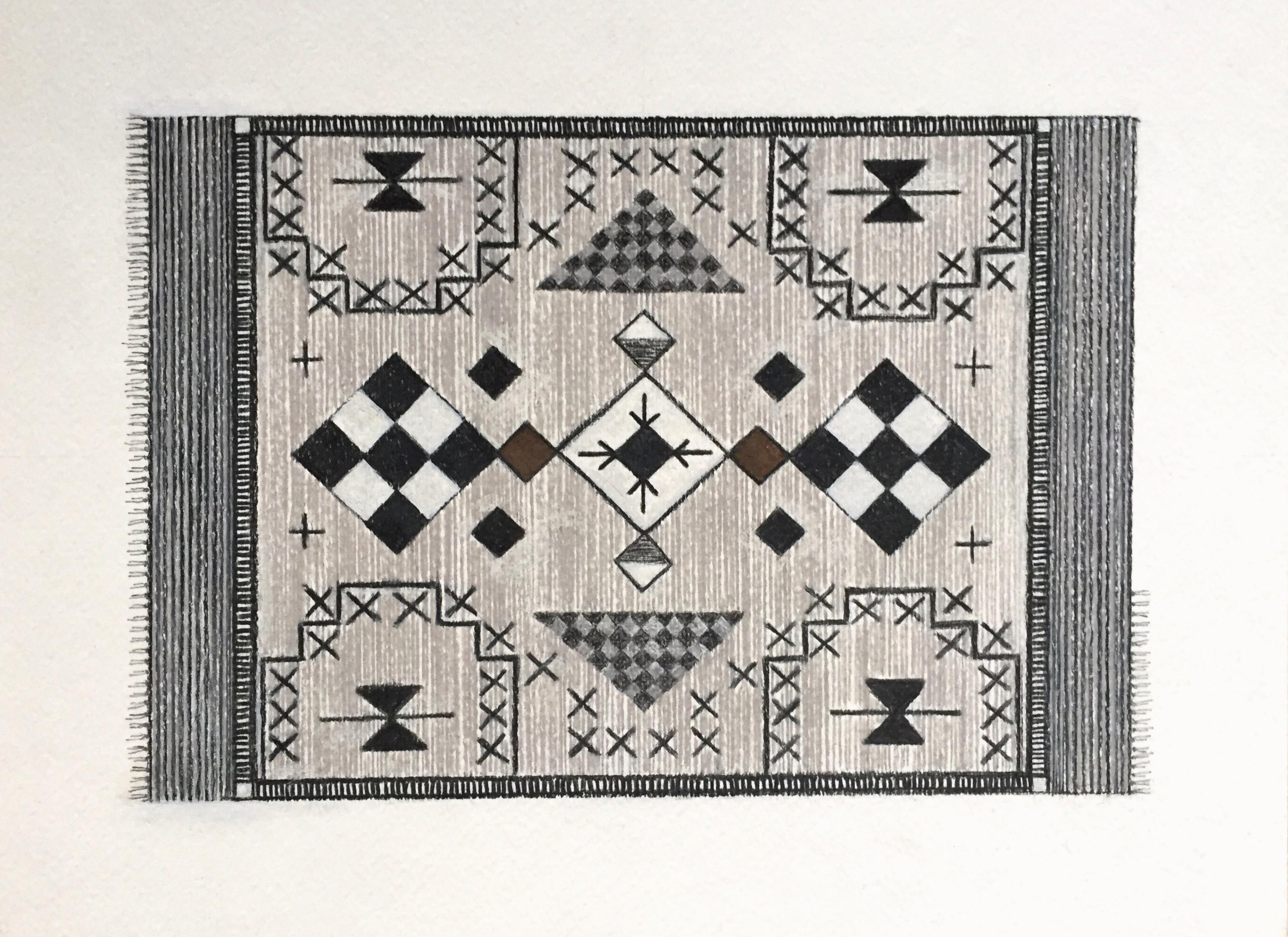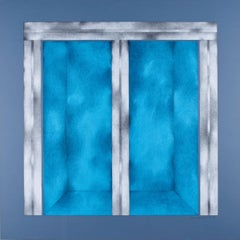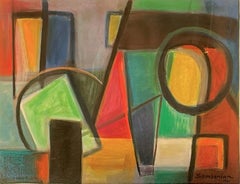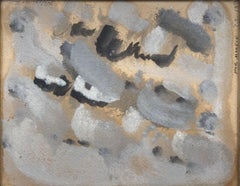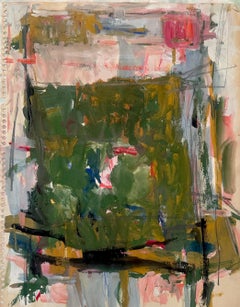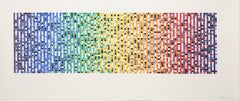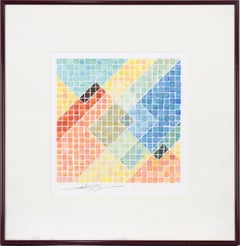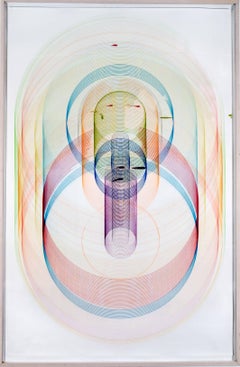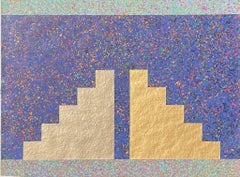
"Staircases Falling Out, " Adrianne Wortzel, Blue and Gold Abstract Op Art
View Similar Items
Want more images or videos?
Request additional images or videos from the seller
1 of 9
Adrianne Wortzel"Staircases Falling Out, " Adrianne Wortzel, Blue and Gold Abstract Op Art1987
1987
About the Item
About the Seller
5.0
Platinum Seller
Premium sellers with a 4.7+ rating and 24-hour response times
Established in 2022
1stDibs seller since 2022
104 sales on 1stDibs
Authenticity Guarantee
In the unlikely event there’s an issue with an item’s authenticity, contact us within 1 year for a full refund. DetailsMoney-Back Guarantee
If your item is not as described, is damaged in transit, or does not arrive, contact us within 7 days for a full refund. Details24-Hour Cancellation
You have a 24-hour grace period in which to reconsider your purchase, with no questions asked.Vetted Professional Sellers
Our world-class sellers must adhere to strict standards for service and quality, maintaining the integrity of our listings.Price-Match Guarantee
If you find that a seller listed the same item for a lower price elsewhere, we’ll match it.Trusted Global Delivery
Our best-in-class carrier network provides specialized shipping options worldwide, including custom delivery.More From This Seller
View All"Portico I" Sonia Gechtoff, Shades of Blue Abstract Composition on Paper
By Sonia Gechtoff
Located in New York, NY
Sonia Gechtoff
Portico I, 1979
Signed, dated, and inscribed
Acrylic and pencil on paper
40 x 40 inches
Sonia Gechtoff was born in Philadelphia to Ethel "Etya" and Leonid Gechtoff. ...
Category
1970s Abstract Abstract Drawings and Watercolors
Materials
Paper, Acrylic, Color Pencil
"Colorful Geometric Abstraction, " Simon Samsonian, Armenian Artist
Located in New York, NY
Simon Samsonian (1912 - 2003)
Colorful Geometric Abstraction, 1981
Oil on paper
16 x 22 inches
Signed and dated lower right
Provenance:
Estate of the artist
This survivor of the Armenian genocide wound up in a Cairo orphanage in 1927. He rose to fame as one of Egypt’s great modernists, but after moving to Long Island late in life he withdrew into anonymity. Now his compelling story is being told. Art historians are finally beginning to realize that the power of abstraction in its early years was a zeitgeist not limited to the major European centers of the avant-garde — Paris, Munich, and Moscow — but one that quickly rippled to major cities throughout the world. Within a few decades that original shock of a new vision had inspired thousands of artists from different cultures — particularly those the Middle East — whose translations were not slavish imitations of works by seminal figures like Picasso, Braque, Malevich, and Kandinsky but creative variants colored by their respective cultures.
This essay focuses on an extraordinary Armenian artist, his harrowing survival of the genocide, his rise to fame in Cairo, and his creation of a unique style of abstraction. Art historians have typically formed a chorus that teaches the history of abstraction like this: Just before and during the World War I era, several avant-garde artists emerged to create shockingly different new forms by which artists could express themselves. In Paris, Picasso and Braque broke out with cubism, quickly followed by Mondrian. In Moscow, Malevich created Suprematism, the ultimate hard-edge geometric abstraction. And in Munich, Kandinsky emerged as the father of Abstract Expressionism. Within these few short years a zeitgeist was sensed throughout the art world. American pioneers, too — particularly Stanton Macdonald-Wright and Morgan Russell — felt this explosive freedom of expression. When Europe was recovering after World War I it became clear that Paris would retain its title as capitol of the art world, lasting through the Roaring Twenties and even through the Great Depression. But the end of World War II changed everything. A parallel war had been won by a group of irascible young Abstract Expressionists in New York — led by Pollock, Rothko, DeKooning, and Kline. No sooner had Paris been liberated from the Germans than Picasso, Matisse, Breton, and Duchamp surrendered to the Americans. From that point on New York would be the epicenter of the art world.
But a lens that focuses myopically on the war between the avant-garde of Paris and New York misses the wider narrative of multiple aesthetic modernities that developed in the several decades following World War I. For Armenian artists the matter is even more complex owing to the genocide of 1915 where more than 1.5 million people — seventy-five percent of Armenians in the Ottoman Empire — were massacred. Those not shot on the spot were sent on death marches through the Mesopotamian desert without food or water. Frequently, the marchers were stripped and forced to walk naked under the scorching sun until they dropped dead.
As a child Samsonian witnessed the murder of his parents and most of the members of his family. Soon thereafter, his older sister, Anahid, quickly shepherded him into a line of children being rescued by Greek nuns. But they became separated and he lost her, too. He was sent to a Greek orphanage in Smyrna (now Izmir), on Turkey’s west coast. Because he only knew his first name, the orphanage gave him a last name based on the place where they found him — Samsun — a major port on Turkey’s north coast on the Black Sea. His birth date was unknown, too. According to Samsonian’s vague recollections he assumed he was about three or four years old at the onset of the genocide, which would place his birth year in 1911 or 1912. In 1922, when Samsonian was about 10, the Turks ended their war with the Greeks by putting Smyrna to the torch in what has been called the “Catastrophe of Smyrna.” Once again, the child was on the run, escaping the fire and slaughter. He found temporary refuge in Constantinople, but within a year that major port would fall to the Turks, too, and become renamed as Istanbul. This time, Samsonian was whisked away to an orphanage in Greece founded by the American charity, Near East Relief — which is credited with saving so many Armenian orphans that the American historian Howard M. Sachar said it “quite literally kept an entire nation alive.
Any understanding of Samsonian’s approach to modernism requires careful consideration of the impact of his early years because his art is inseparable from the anguish he experienced. In 1927, when he was a teenager, he was transferred to Cairo, Egypt, then a cosmopolitan city hosting a sizable portion of the Armenian diaspora. There he lived with thirty-two other children on the top floor of the Kalousdian Armenian School. Upon graduating in 1932 he won a scholarship to attend the Leonardo da Vinci Art Institute — an Italian art school in Cairo — where he won first prize in final examinations among one hundred students. He found work with an Armenian lithographic printer and he returned to the Kalousdian Armenian School to teach drawing. In 1939 he married one of his students, Lucy Guendimian.
The Cairo in which Samsonian matured as an artist was home to many prominent art collectors after World War I. In this receptive environment Samsonian exhibited widely and won many awards. Beginning in 1937 and for the next thirty years he exhibited annually at the prestigious Le Salon du Caire hosted by the Société les Amis de l’Art (founded in 1921). After World War II he hit his stride as a modernist in Cairo, counting among his peers other artists of the Armenian diaspora such as Onnig Avedissian, Achod Zorian, Gregoire Meguerdichian, Hagop Hagopian...
Category
1980s Abstract Geometric Abstract Drawings and Watercolors
Materials
Paper, Oil
"#191" Ethel Schwabacher, Mid-Century, Abstract Expressionist Shades of Gray
By Ethel Schwabacher
Located in New York, NY
Ethel Schwabacher
#191, 1956
Initialed and dated upper left
Oil on paper
7 1/4 x 9 1/4 inches
Provenance
The artist
Private Collection, New York (acquired from the above in 1972)
St...
Category
1950s Abstract Expressionist Abstract Drawings and Watercolors
Materials
Paper, Oil
"Green Square #14" Diana Kurz, Vibrant Color Abstract Expressionist Work
By Diana Kurz
Located in New York, NY
Diana Kurz
Green Square #14
Gouache on paper
11 x 14 inches
Diana Kurz (born 1936) is an Austrian-born feminist painter. In 1938, Diana Kurz's family fled Austria, first to England...
Category
1960s Abstract Expressionist Abstract Drawings and Watercolors
Materials
Paper, Gouache
"Green Square #19" Diana Kurz, Abstract Expressionist Gestural Green and Purple
By Diana Kurz
Located in New York, NY
Diana Kurz
Green Square #19
Gouache on paper
25 x 19 inches
Diana Kurz (born 1936) is an Austrian-born feminist painter. In 1938, Diana Kurz's family fled Austria, first to England...
Category
1960s Abstract Expressionist Abstract Drawings and Watercolors
Materials
Paper, Gouache
"Green Square #12" Diana Kurz, Intense Green Abstract Expressionist Composition
By Diana Kurz
Located in New York, NY
Diana Kurz
Green Square #12
Gouache on paper
19 x 14 inches
Diana Kurz (born 1936) is an Austrian-born feminist painter. In 1938, Diana Kurz's family fled Austria, first to England...
Category
1960s Abstract Expressionist Abstract Drawings and Watercolors
Materials
Paper, Gouache
You May Also Like
Untitled VI, Acrylic Painting on Paper by David Roth
By David Roth
Located in Long Island City, NY
Artist: David Roth, American (1942 - )
Title: Untitled VI
Year: 1974
Medium: Acrylic Painting on Arches Paper, signed and dated
Image Size: 15.5 x 45.5 inches
Size: 22.5 in. x 53.5 i...
Category
1970s Op Art Abstract Drawings and Watercolors
Materials
Acrylic
Geometric Color Grid - Op Art Composition
Located in Soquel, CA
Highly precise op-art composition by an unknown artist. A grid of colored squares has been created with various colors, divided by occasional diagonal lines that give the feel of ove...
Category
21st Century and Contemporary Op Art Abstract Drawings and Watercolors
Materials
Paper, Watercolor
$360 Sale Price
20% Off
Untitled
By John Kalymnios
Located in White Plains, NY
'Untitled' by John Kalymnios, 1999. Pantone ink on paper, 78.5 x 51.25 in. (framed). This geometric op art drawing features bands of concentric circles with the full spectrum colors ...
Category
1990s Op Art Abstract Drawings and Watercolors
Materials
Ink, Archival Paper
Untitled V, Op Art Abstract Geometric Pencil Drawing David Roth
By David Roth
Located in Long Island City, NY
This colored pencil drawing was created by American artist David Roth. Roth's images are proportioned according to a strict mathematical formula - the pictures are composed according...
Category
1970s Op Art Abstract Drawings and Watercolors
Materials
Paper, Color Pencil
#2
Located in Philadelphia, PA
This 11x14-inch hand-drawn Op Art piece features exceptional detail. The time invested in this limited edition was well spent, as the meticulous creation process cultivates patience...
Category
21st Century and Contemporary Op Art Abstract Drawings and Watercolors
Materials
Paper, Pen
Agam Original Marker Drawing Colorful Spirals Hand Signed Israeli Kinetic Op Art
By Yaacov Agam
Located in Surfside, FL
Yaacov Agam, Israeli (b. 1928)
Hand signed and dated
This is a great example of bold, graphic, mod design. Along with Reuven Rubin and Menashe Kadishman he is among Israel's best kn...
Category
1990s Op Art Abstract Drawings and Watercolors
Materials
Archival Paper, Permanent Marker

